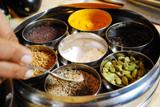
How to Make Kitchari Recipe?
(Serves 4-5)
Kitchari is one of the most balancing and easy to digest complete meals in Ayurvedic Medicine. It is a great during fasting or cleanse periods, especially spring.
Ingredients:
- 1 cup basmati rice
- 1 cup yellow split mung daal
- 6 cups distilled or purified water
- 1 inch piece of shredded ginger, peeled & chopped
- 1 small handful of fresh cilantro
- 1 cup spinach or seasonal veggies
- ½ cup chopped carrots
- 3 tbsp ghee
- ¾ tsp cumin seeds
- 5 whole cardamom pods (or ½ tsp seeds)
- ¼ tsp turmeric
- 1 inch piece of cinnamon bark
- 3 bay leaves
- ½ tsp Himalayan pink salt (to taste)
Directions:
Preparation:

- Wash mung and rice until water is clear to remove excess starch.
- Soak the dal overnight or for a few hours to help digestibility (optional).
Step 1
- Put rinsed rice and mung daal in a pot with water and bring to boil over high hear. Reduce the heat to low and simmer for 10 minutes
- Add remaining seasonal veggies to the pot and stir well. Cover pot and cook about 25 to 35 min. until mung daal is soft.
Step 2
- Heat ghee over medium heat in another saucepan.
- Add, mustard seeds, cumin seeds, cinnamon, cardamom, and bay leaves, or as preferred.
- Gently stir until you hear mustard seeds start to pop and see the other seeds start to turn brown (about 3 minutes).
- Stir sautéed spices with the turmeric into the rice and mung daal and mix well.
Step 3
Garnish with cilantro (or parsley) leaves and serve immediately.
There are many ways and variation to making Kitchari









